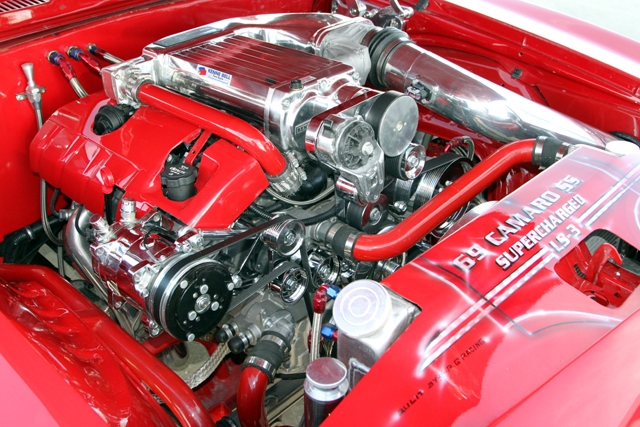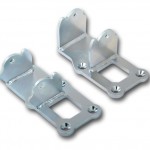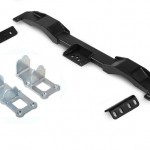Back in the day, swapping out a small block Chevrolet 305 or 350 V8 for a 454 cubic-inch big block was one of the most cost-effective ways to get more power. Today, the LS V8 engine is now one of the most widely swapped-in power plants for use in early model GM muscle cars and trucks, and performing a GM LS engine swap into an early muscle car has never been easier.
By now, you probably know that GM’s LS computer-controlled V8 engines are smaller and more powerful (not to mention more fuel efficient) than their earlier counterparts. They can also be used with any type of induction system from a single or dual carburetor set-up, to a factory or aftermarket EFI system. And now, thanks to the increased availability of aftermarket accessories, LS swaps are almost a one-day, bolt-on upgrade.
Hooker Headers was one of the first manufacturers to introduce a line of products for LS engine swaps. The company’s involvement in racing and the performance car hobby allowed its staff to quickly identify the need for a line of engine swap mount plates. Made from 3/8-inch thick hot-rolled steel, these engine mounting plates allow any Gen-III or Gen-IV LS based engine (LS1, LS2, LS6, LS7) to be mounted to a standard small-block Chevy frame mount.
The plates are CNC machined, not just steel plate cut outs, and are zinc plated to resist corrosion. They’re designed to bolt onto the engine block and allow you to install the vehicle’s original style, three-bolt engine mounts. The use of countersunk head machined screws help the engine mount plates create a flush and sturdy foundation for any LS swap, and they work with most small block Chevy mounts and frame towers.
But because not all LS engines and transmission combinations are exactly the same, Hooker engine swap mount plates are available in various configurations that allow the engine to be mounted in the stock location, or anywhere from 1/2-inch, 1.25-inches, or 3-inches forward on the vehicle’s original frame. This is often necessary to properly clear exhaust headers or the type of transmission that’s being used, and allows for plenty of maneuvering room to fit the engine properly between the frame.
Second-generation Camaros are quickly growing in popularity for LS swaps, so Hooker created a specific LS engine swap kit for 1970 thru 1981 Camaros. An LS transmission swap kit is also available, allowing the easy installation of either a late-model GM 4L60E automatic transmission or a T-56 manual five speed transmission.
Of course, you don’t always have to own a Chevy or GM vehicle to enjoy the power and benefits of an LS V8 engine. Nissan owners have also found that an LS engine is a perfect swap to create a high-performance autocross and drift car. Hooker has created an engine swap mount kit that consists of engine mount brackets and a transmission crossmember, allowing the installation of an LS engine and T56 transmission combination to fit into S13 and S14 model Nissan 240X sports cars. While this combination may seem farfetched, it’s a popular upgrade that boosts the performance of these vehicles into an entirely new category of muscle car.
So while it may seem like an LS engine can be swapped into just about anything these days, it’s good to know there’s resources and parts available to make the job easier.




[…] the years, we’ve shown you how to identify LS engine blocks, looked at some of the engine mount options, examined the process of picking cylinder heads and intake manifolds for LS swaps, and more. Other […]